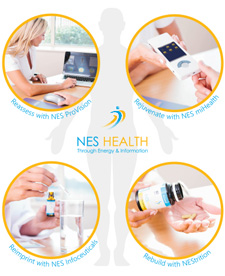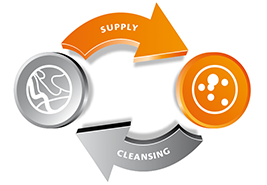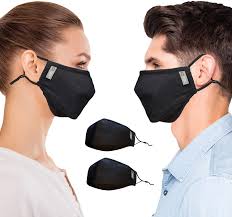Why Blood Type is Important

Blood type is a powerful indicator of your genetic code (click here to hear Dr. D'adamo). Blood types have evolved over thousands of years and contain the genetic message of diets and behaviors from our ancestors. By following the diet prescribed for one's blood type, an individual can make choices that correspond to their biological profile.
While several systems exist to categorize blood, including Lewis, Rhesus (Rh), and MN (types of antigens discovered by Landsteiner and colleagues in 1927 which have an association with various diseases) blood group systems, Dr. D'Adamo has found that 90% of the factors dealing with the connection between health and blood type are dependent on the ABO, or primary blood type system.
Every life form has unique antigens that form part of its chemical signature. Similarly, each blood type possesses an antigen with a unique chemical structure. Blood type antigens are ubiquitous throughout the body and are among the most powerful antigens involved in the process of identification of "friend or foe." When the body senses foreign antigens, antibodies are generated which defend the body against the invaders. The "anti-other-blood" type antibodies are among the strongest antibodies in our immune system.
Research on the A/B/O blood group antigens has been a tremendous focus in the molecular oncological field. Researchers have found compelling rationale for several blood type associations in membrane chemistry and tumor immunology. The groups’ biggest interest in blood types stems from their conclusion that A/B/O antigens play an important role in cell maturation and control. An example of this, the appearance or disappearance of a blood group antigen is a “hallmark” of many common cancers [Hirohashi, S. 1986]
Several tumor markers or antigens are the known product of certain blood type precursors. Of these markers, the A-like antigen is the predominant and accounts for the association with blood type A and AB cancers. [Ulger, et al. 2002]. In contrast, type O blood groups tend to be more associated with autoimmune disorders [D’Adamo, 2002, P 167].
There seems to be a reason for the contrast between the two classes, however. Over-active immune activity tends to result in less malignancy and “overly tolerant” immune activity encourages malignancy. This suggests that all individuals’ tissues, both normal and cancerous, have A-like antigens (present at a biochemical level) and are inaccessible to the immune system unless stimulated by an autoimmune response, or to the “immune response of a growing cancer” where the A-like antigen becomes accessible.
This shows that a derangement of blood type activity is connected to cancer and that the expression of A-like antigens on the surface of tumors is one of those derangements. However, it is not only linked to blood type group A, as several tumors show an association with blood groups B and O as well. One other factor should be mentioned about the A-like antigen. It has been discovered that the A antigen has the ability to attach to the receptor for “growth factors”- these are found in much higher concentrations on cancer cells than normal cells. Growth factors, proteins that act on nearby cells, are cell proliferative regulators, and can stimulate cell differentiation.
Over a lifetime as the body changes our bones elongate, men develop facial hair, and women’s breasts enlarge. Also, in every response to a situation that the body undergoes, the growth factor is active. This would be true during embryonic development, puberty; or when the body needs to repair tissue, due to injury (inflammation); and finally cancer. These situations all require our cells to 1) proliferate, 2) enlarge, and 3) die, which is the role of growth factor. However, overproduction of growth factor, specifically epidermal growth factor (EGF) contributes to deregulation of “normal growth” and can contribute to cancerous cell growth as is seen with prostate, colon, breast, and lung cancer (to mention a few).
Because of the influence the blood group antigens have on the immune system, it is imperative to maintain an immune system in good-working order. Remember, that all viruses, bacteria, etc. have antigens that attach to the cell, and unless your immune system is capable of creating antibodies to fight and kill the antigens- disease progresses.
Finally, Natural killer cell (NKC) function is very important in warding off disease.
Many dietary factors have been linked to NK cell activity. Failure to eat breakfast, irregular eating habits, low vegetable intake, inadequate protein, excessive wheat intake, high fat diets (especially those with excessive amounts of polyunsaturated fatty acids of the omega 6 type) have all been associated with poor NK cell activity.
Researchers have suggested that from an immunological point of view, a high intake of omega 6 polyunsaturated fatty acids is inadvisable. However, the effect of moderately decreasing the amount of omega 6 fats in favor of more of the omega 3 oils found in cold water fish can begin to improve NK cell activity (flaxseed oil did not have this effect though). And, decreasing the total amount of fat in the diet to about 22 percent of total calories has been shown to be the single most influential dietary intervention to date with an ability to positively increase NK cell activity levels.
In general, when it comes to diet, stick to your blood type plan, making sure to get adequate vegetables (all blood types-A, B, AB, O). Keep your total fat intake to about 22 percent of your diet and be sure to incorporate good oils (like those found in salmon, mackerel, sardine--all blood types) while minimizing polyunsaturated vegetable oils like sunflower, safflower, corn, canola, etc. Eat plenty of meat and fish (if you are an O), dairy, meat and seafood (if you are a B), plenty of soy products and some fish (if you are an A), and a sampling of all of these protein sources (for AB's).
Some dietary lectins (such as found in wheat) have an NK lowering activity, others have no activity on NK cell activity, and there are even some lectins (not usually found in the diet) which have an ability to increase NK cell activity. The effect of lectins on NK cells can be both directly or indirectly modulated. Many lectins can influence NK cell activity directly by binding to the carbohydrate chains contained on these immune cells. Critics of the lectin hypothesis in Eat Right for Your Type (ER4YT) have suggested that lectins are unimportant and either get destroyed by digestive secretions or in some other way are not absorbed. Had these critics taken a moment to review the scientific literature on lectins, they would soon realize that no controversy exists. Lectins are absorbed and do reach your systemic circulation. But lectins do not have to reach your NK cells to impact them negatively. High lectin diets generate polyamines in your digestive tract (protein breakdown products) and polyamines reduce NK cell activity. High lectin diets also disrupt your intestinal flora (the balance of good and bad bacteria in your digestive tract), and an imbalanced flora also results in decreased NK cell activity. Let's take a moment now to look at a bit of the direct actions of some lectins on NK cells.
Many of the foods people eat on a daily basis can contain lectins (see ER4YT) and many of the most commonly consumed lectins can dramatically decrease NK cell function.
Researchers have suggested lectins have the following properties with regard to an ability to influence NK cell activity; 1) they are dose-dependent (meaning a higher concentration of lectins equals less NK cell activity, 2) their activity to influence NK cell function is not predictable based on their other activities (as an example strong mitogens such as phytohaemagglutinin (PHA) or weak mitogens such as wheat germ agglutinin (WGA) both strongly decrease NK cytotoxicity; 3) reversal of their inhibition with a return to normal NK cytotoxic activity is obtained in a lectin-free environment.
When it comes to lectins having a negative impact on NK cells, perhaps the largest culprit is the lectin found in wheat (wheat germ agglutinin (WGA)). Evidence clearly points to the fact that NK cells bind WGA, that this lectin can decrease NK cell activity and inhibits the lysis (dissolution) of targets by NK cells. WGA has such specificity for NK cells that it has even been proposed as a useful tool to isolate NK cells. N-acetylglucosamine (although capable of reducing NK activity on its own) can block the inhibitory effect of the lectin in wheat.
If you do not know your blood type, contact us as I have kits available in my office for $25.00.





